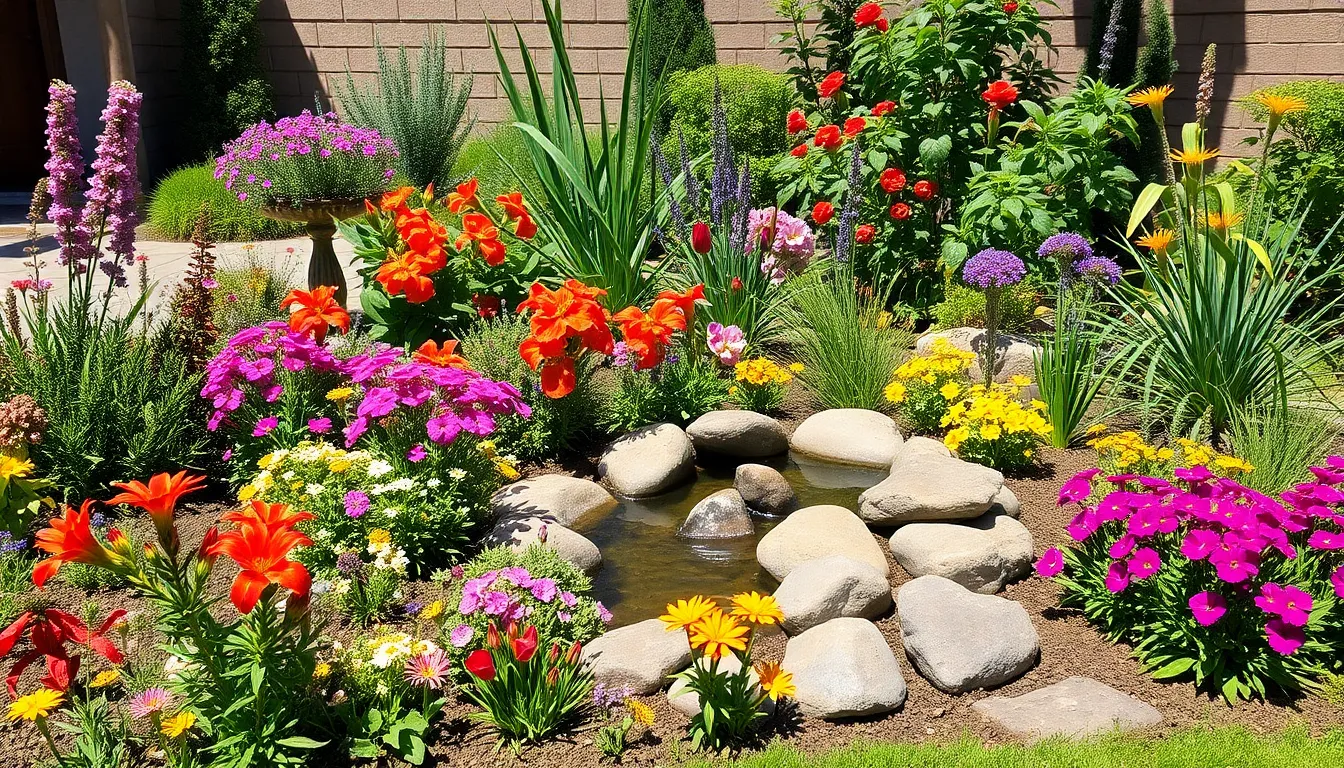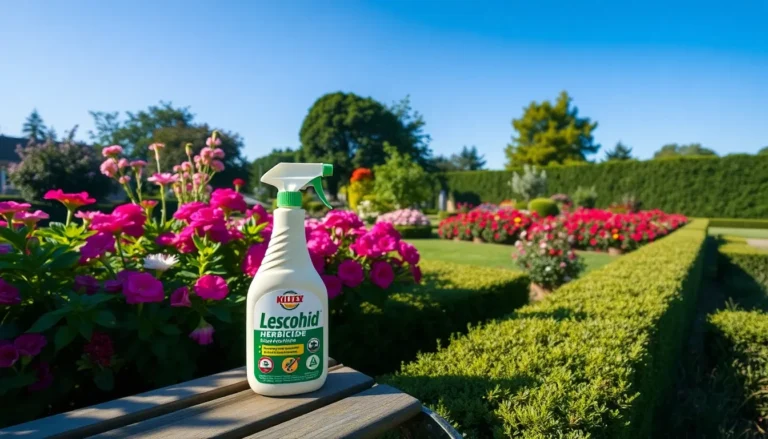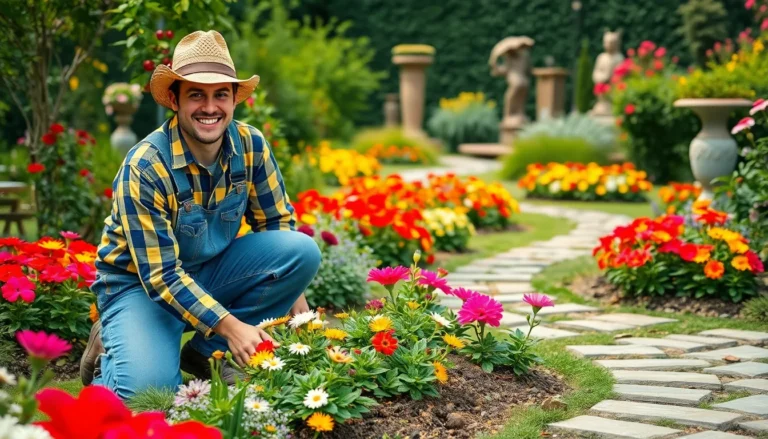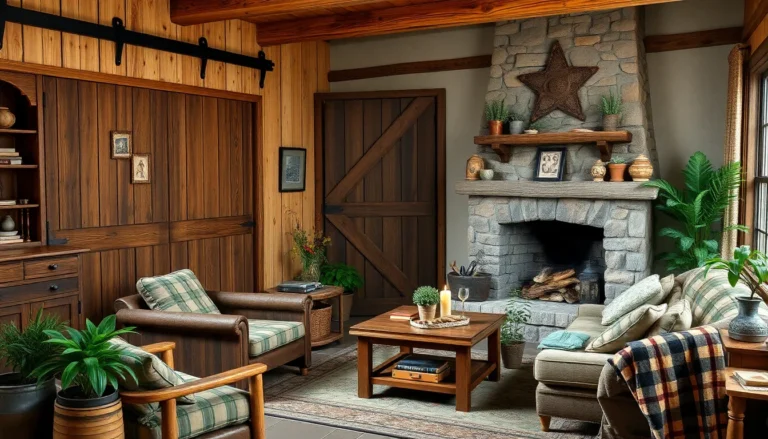Table of Contents
ToggleTransforming a garden into a stunning landscape isn’t just a task; it’s a delightful adventure. Picture this: vibrant flowers dancing in the breeze, lush greenery inviting you to take a stroll, and the sweet scent of nature wrapping around you like a cozy blanket. Garden landscaping isn’t just about planting a few flowers; it’s about creating a personal oasis that reflects one’s style and personality.
What Is Garden Landscaping?
Garden landscaping involves the art and science of designing outdoor spaces. It transforms gardens into visually appealing environments that reflect personal style. Incorporating various elements such as plants, flowers, pathways, and decorative structures enhances aesthetics and functionality.
Landscaping encompasses planning, planting, and maintenance. Each project starts with understanding the unique characteristics of the space. Soil type, sunlight exposure, and climate conditions dictate suitable plants for the area. In addition, designers consider existing features, like trees or slopes, to maximize the garden’s potential.
Using principles of design such as balance, proportion, and color enhances outdoor beauty. Identifying the desired theme—whether cottage, modern, or tropical—guides plant selection and layout. Focal points, such as water features or seating areas, draw attention and create visual interest.
Garden landscaping also emphasizes sustainability. Native plants and eco-friendly practices reduce maintenance and support local wildlife. Creating habitats for beneficial pollinators boosts garden health and resilience. Incorporating hardscapes like patios or pathways improves accessibility and usability.
Personalizing the space further defines garden landscaping. Unique sculptures, artistic pots, or decorative lighting showcase individual preferences. Gardeners express creativity while achieving a harmonious flow between nature and design.
Overall, garden landscaping combines creativity, planning, and nature. Its focus lies in crafting a serene space for relaxation and enjoyment. Each element contributes to a cohesive and appealing outdoor environment that resonates with the person’s lifestyle.
Importance of Garden Landscaping

Garden landscaping plays a significant role in enhancing outdoor spaces. It creates visually inviting environments that blend beauty with functionality.
Aesthetics and Design
Aesthetic appeal forms a crucial element of garden landscaping. Attractive designs draw the eye and elevate the overall atmosphere of the space. Unique plant arrangements and striking color palettes provide visual interest. Focal points, such as sculptures or water features, can enhance the experience further. Each element contributes to a cohesive design that reflects personal style. Visitors often enjoy the pleasant aesthetics, which encourage outdoor spending. A well-designed landscape improves property value and attracts potential buyers.
Environmental Benefits
Environmental advantages emerge as a key factor in garden landscaping. Native plants require less water and maintenance, promoting sustainability. Garden designs can improve biodiversity by providing habitats for wildlife. Pollinator gardens, for example, support bees and butterflies, thus aiding ecological balance. Soil erosion can be minimized through strategic planting. Landscapes capturing rainwater assist in reducing runoff and protecting local waterways. These practices promote a healthier environment while creating beautiful, functional outdoor spaces. Sustainability thrives when landscape choices align with ecological principles.
Types of Garden Landscaping
Garden landscaping encompasses various styles that cater to different tastes and environmental considerations. Each type offers distinct characteristics that contribute to the overall aesthetic and functionality of the outdoor space.
Formal Landscaping
Formal landscaping showcases symmetry and structured designs. Gardens in this category often feature neatly trimmed hedges and orderly plant arrangements. Pathways, typically designed with geometric shapes, lead the eye through the space, creating a balanced appearance. Specific plants used include boxwoods and topiaries, which enhance the neatness of the garden. Water features, such as fountains, add an elegant touch, enhancing the serene atmosphere. This style suits those who prefer a polished look, contributing to a sophisticated outdoor experience.
Informal Landscaping
Informal landscaping embraces a relaxed, natural appearance. Plant placement appears random but is deliberately chosen to create a free-flowing look. Several native plants, wildflowers, and ornamental grasses thrive in these gardens, attracting local wildlife. Curved pathways often weave through the space, encouraging exploration and creating a welcoming environment. Features like rustic benches or garden sculptures add personal charm. Those who appreciate a more laid-back vibe often gravitate towards this style, promoting an inviting outdoor space.
Sustainable Landscaping
Sustainable landscaping focuses on eco-friendly practices and promotes environmental health. Native plants form the backbone of these gardens, requiring less water and fostering biodiversity. Techniques, such as rainwater harvesting and composting, support sustainability. Habitat creation for local wildlife—especially pollinators—remains a key aspect, with garden designs supporting vital ecosystems. This approach not only enhances beauty but also reduces maintenance costs. Homeowners interested in long-term environmental benefits often choose sustainable landscaping, thereby aligning personal aesthetics with ecological responsibility.
Key Elements of Garden Landscaping
Garden landscaping incorporates several essential elements that contribute to a harmonious outdoor space. Thoughtful choices lead to an inviting and functional environment.
Plant Selection
Choosing the right plants plays a crucial role in garden landscaping. Native plants thrive in local conditions, requiring less maintenance. Colorful flowers and varied foliage enhance visual appeal. Consider incorporating a mix of perennials and annuals for year-round interest. In addition, plants with different heights create layers within the landscape. Understanding unique growth patterns helps in arranging plants effectively. Sustainable plant choices support local wildlife while adding beauty.
Hardscaping Features
Incorporating hardscaping features adds structure to garden landscapes. Materials such as stone, brick, and wood provide durable options for pathways and patios. These elements define spaces, leading visitors through the garden. Structures like arbors or trellises can create focal points and enhance vertical interest. When planning hardscaping, consider the flow between natural and built elements. Additionally, well-placed benches offer rest areas, inviting relaxation amidst the greenery. Thoughtful design balancing hardscaping with plants ensures visual harmony.
Water Features
Water features introduce a calming element to garden landscapes. Options range from small ponds to flowing fountains, each offering unique aesthetic qualities. Moving water attracts birds and benefits local wildlife, enhancing biodiversity. Position water features strategically to maximize visibility and sound. The gentle flow can create a tranquil atmosphere conducive to relaxation. Furthermore, incorporating aquatic plants promotes a natural ecosystem. Design choices should consider maintenance requirements to ensure longevity and sustainability.
Tips for Successful Garden Landscaping
Successful garden landscaping hinges on thoughtful planning and design. Homeowners should start by assessing their space, considering factors like sunlight, soil type, and existing features. Each element plays a role in the final landscape. Creating a design that aligns with these characteristics enhances beauty and functionality. Sketching layout ideas helps visualize plant arrangements and hardscaping features. Cultivating biodiversity through the choice of native plants not only supports local wildlife but also promotes a sustainable garden aesthetic.
Planning and Design Process
The planning process begins with identifying goals for the garden. Prioritizing elements like color, texture, and seasonal interest influences final selections. Homeowners can create distinct zones by combining various plant palettes and structural features. Considering the site’s climate supports the choice of heat-tolerant or frost-resistant varieties. Gathering inspiration from magazines or online resources sparks creativity. Engaging with professional landscape designers may lead to innovative solutions tailored to individual preferences. Consistent adjustments during the design phase ensure a cohesive outdoor space.
Maintenance and Care
Ongoing maintenance is essential for a thriving garden landscape. Regular watering schedules help keep plants healthy, particularly in dry spells. Mulching around plants suppresses weeds and retains moisture, reducing watering needs. Pruning encourages growth and maintains shape, enhancing the overall appearance. Fertilizing with organic materials supports soil health and plant vitality. Regular inspections identify pest issues before they escalate, ensuring a healthy ecosystem. Scheduling seasonal tasks, such as dividing perennials or refreshing mulch, maintains a vibrant garden throughout the year.
Transforming a garden into a stunning landscape is a fulfilling endeavor that enriches both the environment and personal well-being. With thoughtful planning and a keen eye for design, anyone can create a space that resonates with their style while promoting sustainability.
Incorporating native plants and eco-friendly practices not only enhances beauty but also supports local wildlife. Each garden becomes a unique reflection of its owner, blending creativity with nature’s elegance. By embracing the art of landscaping, individuals can cultivate serene outdoor havens that invite relaxation and joy.








